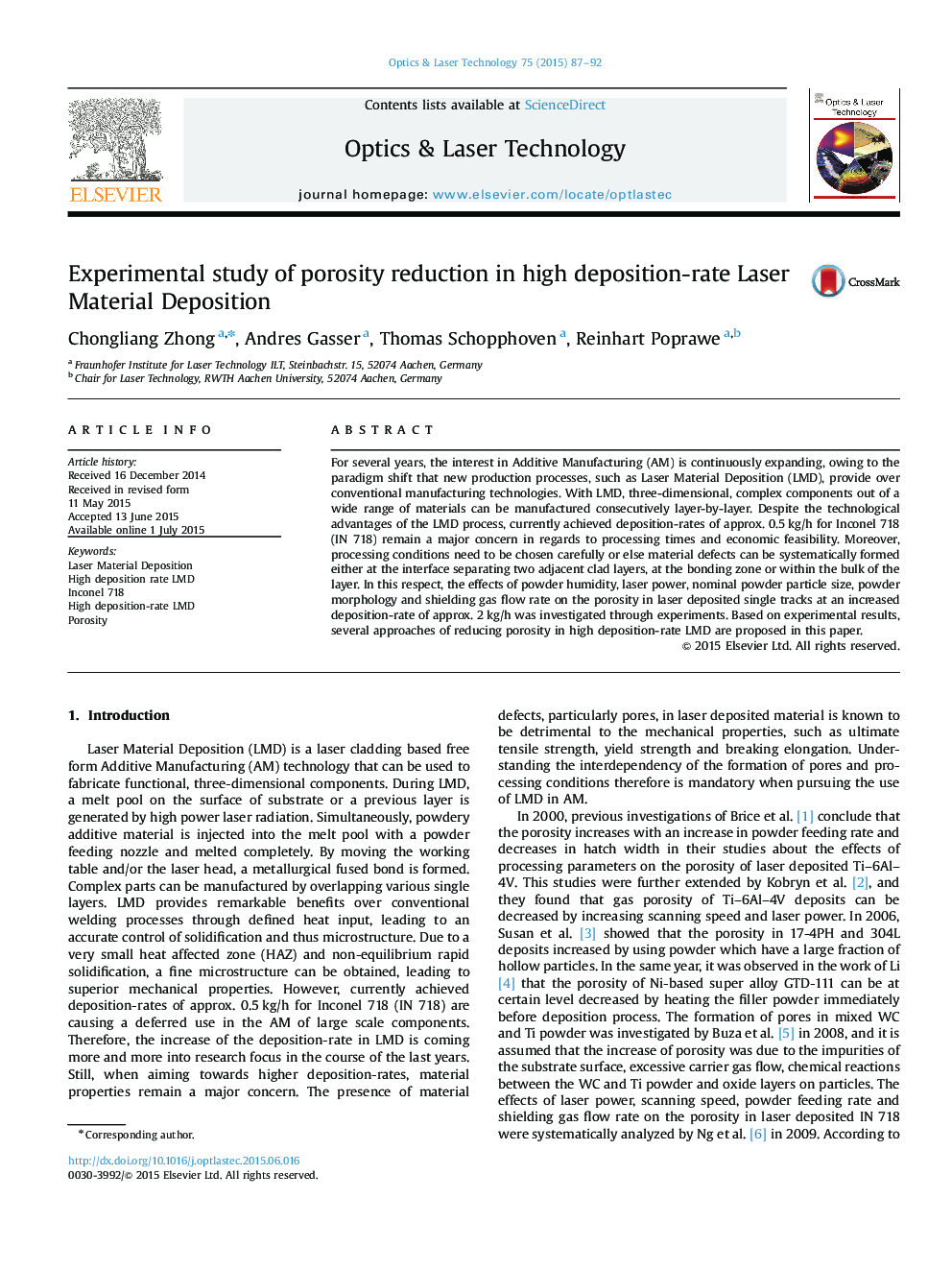| Article ID | Journal | Published Year | Pages | File Type |
|---|---|---|---|---|
| 739009 | Optics & Laser Technology | 2015 | 6 Pages |
•Porosity can be effectively reduced by applying drying treatment before deposition.•Laser powder has a strong influence on porosity. Porosity decreases as increasing laser power.•Using finer powder can reduce porosity.•Porosity can be reduced by using powder with fewer satellites and less irregular particles.•The shielding gas flow rate showed no obvious influence on porosity in high deposition-rate LMD, but it affected the shape of the dilution zone.
For several years, the interest in Additive Manufacturing (AM) is continuously expanding, owing to the paradigm shift that new production processes, such as Laser Material Deposition (LMD), provide over conventional manufacturing technologies. With LMD, three-dimensional, complex components out of a wide range of materials can be manufactured consecutively layer-by-layer. Despite the technological advantages of the LMD process, currently achieved deposition-rates of approx. 0.5 kg/h for Inconel 718 (IN 718) remain a major concern in regards to processing times and economic feasibility. Moreover, processing conditions need to be chosen carefully or else material defects can be systematically formed either at the interface separating two adjacent clad layers, at the bonding zone or within the bulk of the layer. In this respect, the effects of powder humidity, laser power, nominal powder particle size, powder morphology and shielding gas flow rate on the porosity in laser deposited single tracks at an increased deposition-rate of approx. 2 kg/h was investigated through experiments. Based on experimental results, several approaches of reducing porosity in high deposition-rate LMD are proposed in this paper.
